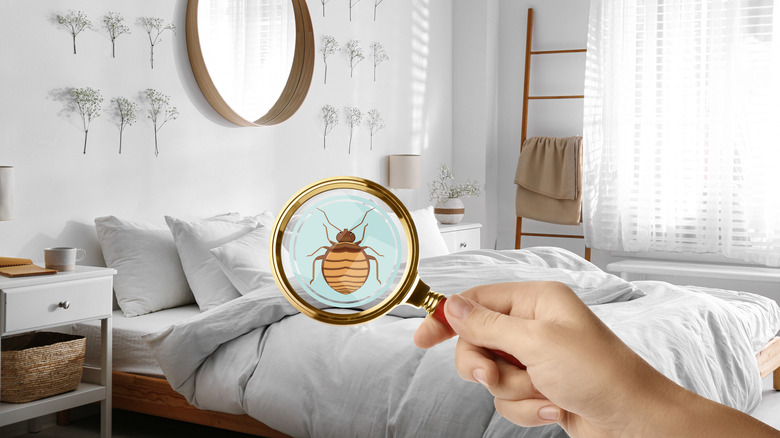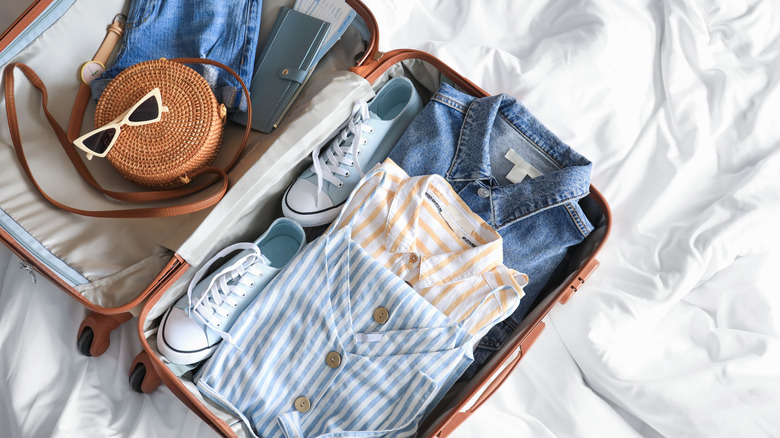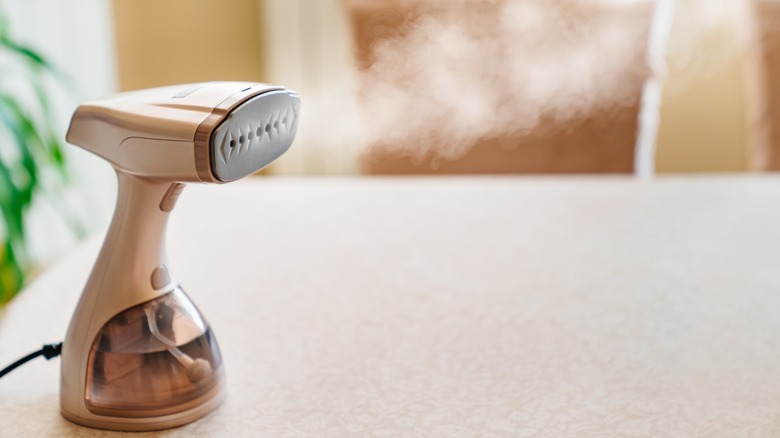How To Prevent Bringing Bed Bugs Into Your Home After A Trip
Not many things are more cringeworthy than bed bugs. After all, like tiny vampires, they feast on the blood of humans and animals. They get their name from their tendency to hide in the nooks and crannies of mattresses or other bed-related areas since humans resting at night are one of their favorite targets for feeding.
If you've never seen a bed bug, they're small, flat insects that get larger and turn red after they feed. And because they live in the crevices of furniture and generally come out at night, they can be hard to detect. Once a home is infested with bed bugs, they can spread to any room in a house or neighboring homes in multi-family dwellings. Getting rid of bed bugs can also be tricky since they hide together in tight spaces rather than making nests. To begin with, keeping them out of your home is always the best course of action.
What to know about travel and bed bugs
Even the toniest, cleanest hotels in the most upscale areas have been known to have bed bugs from time to time. How does that happen? The sneaky little bloodsuckers can hide in unexpected places like pieces of luggage. Yes, they can just as easily stow away in the crevices and pockets of suitcases or backpacks as in mattresses and other furniture. People bring them into hotels in their suitcases; then you can unknowingly transport them back home in yours.
It takes a bit of effort, but if you think you see bed bugs while you are traveling — or want to play it safe — taking some preventative measures when you get back home is the way to go. The first thing to know is that heat is a proven method to kill bed bugs. Given that fact, open your suitcases outside your home and place all clothing inside sealable plastic bags until you can wash them in hot water and dry them on high heat. Or, as suggested by Mayo Clinic, you can place the plastic bags inside a car parked in the sun with the windows rolled up for at least 20 minutes. This only works in hot environments in the summer since the temperature inside the car needs to get to at least 120 degrees Fahrenheit. Either way, you'll eliminate bed bugs or their eggs hitchhiking in your clothes.
What to do with luggage after bed bug exposure
After unpacking and treating your clothing, it's important to thoroughly clean your luggage if you're worried about bed bugs. That starts with grabbing a sturdy scrubbing brush and scouring every crevice in your baggage. This will loosen any pesky eggs and insect remains hiding within. Vacuuming the bag is the next step. Make sure to empty the vacuum into an outdoor trash receptacle as soon as you finish.
Since bed bugs are stealthy hiders, using a handheld clothing steamer is an excellent heated option to treat your bag further, as noted by McDonald Pest Control. You can also try sprays to kill bed bugs or spritzing isopropyl alcohol. However, it's hard to get the mist into its hiding places, and sprays can be less optimal if you want to avoid chemicals or strong odors. Regardless of the method, leave the suitcase outside the house to thoroughly dry after you finish. Inspect your bag again for any signs of bed bug life and repeat if necessary before bringing it back inside. Of course, if you don't feel comfortable tackling a task like this, you can contact a pest control professional proficient in bed bug eradication for assistance.



